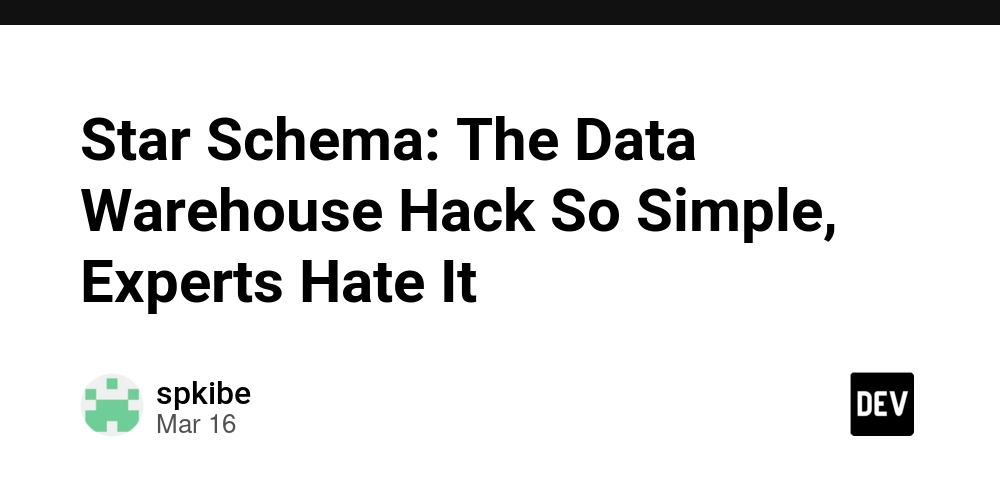Star Schema: The Data Warehouse Hack So Simple, Experts Hate It
Let’s cut through the jargon: a star schema is the easiest, most badass way to build a data warehouse. Picture a fact table—say, sales—sitting in the center like a king, surrounded by dimension tables—products, time, customers—like loyal knights. That’s it. No convoluted hierarchies, no endless joins, just a radial, denormalized beauty built for speed and simplicity. Your notes call it out: “A dimensional model in a star configuration… de-normalized for better performance and easier understanding.” It’s the data equivalent of a cheat code. Why’s it genius? Because it’s optimized for OLAP queries—those big, juicy SELECT statements that slice and dice your data into insights. Fewer joins mean faster results. Hierarchies like “year → quarter → month” live right in the dimension table, so you’re not chasing parent tables across a database swamp. I’ve seen star schemas turn a 10-minute report into a 10-second one—try that with a normalized mess. Plus, it’s extensible: slap on a new dimension or tweak a hierarchy, and your old queries still work. It’s like Lego for data nerds. But here’s the controversial twist: some “experts” overcomplicate it because they can’t handle its simplicity. They’ll snowflake it up (more on that tomorrow) or drown it in metadata until it’s unrecognizable. I once worked with a team that spent weeks debating surrogate keys for a star schema that was already humming—meanwhile, the business was begging for actionable numbers. The truth? Star schemas shine when you keep them lean. Over-engineer it, and you’re just flexing for the wrong crowd. Sure, it’s not perfect. Denormalization means redundancy—updating a customer’s address might hit multiple rows, and that can sting. But in a data warehouse, where reads outnumber writes 100-to-1, who cares? It’s built for analysts, not accountants. So, next time someone smirks at your star schema’s “simplicity,” tell them: “It’s not basic—it’s brilliant.” Then watch their report lag while yours sings.

Let’s cut through the jargon: a star schema is the easiest, most badass way to build a data warehouse. Picture a fact table—say, sales—sitting in the center like a king, surrounded by dimension tables—products, time, customers—like loyal knights. That’s it. No convoluted hierarchies, no endless joins, just a radial, denormalized beauty built for speed and simplicity. Your notes call it out: “A dimensional model in a star configuration… de-normalized for better performance and easier understanding.” It’s the data equivalent of a cheat code.
Why’s it genius? Because it’s optimized for OLAP queries—those big, juicy SELECT statements that slice and dice your data into insights. Fewer joins mean faster results. Hierarchies like “year → quarter → month” live right in the dimension table, so you’re not chasing parent tables across a database swamp. I’ve seen star schemas turn a 10-minute report into a 10-second one—try that with a normalized mess. Plus, it’s extensible: slap on a new dimension or tweak a hierarchy, and your old queries still work. It’s like Lego for data nerds.
But here’s the controversial twist: some “experts” overcomplicate it because they can’t handle its simplicity. They’ll snowflake it up (more on that tomorrow) or drown it in metadata until it’s unrecognizable. I once worked with a team that spent weeks debating surrogate keys for a star schema that was already humming—meanwhile, the business was begging for actionable numbers. The truth? Star schemas shine when you keep them lean. Over-engineer it, and you’re just flexing for the wrong crowd.
Sure, it’s not perfect. Denormalization means redundancy—updating a customer’s address might hit multiple rows, and that can sting. But in a data warehouse, where reads outnumber writes 100-to-1, who cares? It’s built for analysts, not accountants. So, next time someone smirks at your star schema’s “simplicity,” tell them: “It’s not basic—it’s brilliant.” Then watch their report lag while yours sings.










































































































































































![[The AI Show Episode 142]: ChatGPT’s New Image Generator, Studio Ghibli Craze and Backlash, Gemini 2.5, OpenAI Academy, 4o Updates, Vibe Marketing & xAI Acquires X](https://www.marketingaiinstitute.com/hubfs/ep%20142%20cover.png)



























































































































![[FREE EBOOKS] The Kubernetes Bible, The Ultimate Linux Shell Scripting Guide & Four More Best Selling Titles](https://www.javacodegeeks.com/wp-content/uploads/2012/12/jcg-logo.jpg)



![From drop-out to software architect with Jason Lengstorf [Podcast #167]](https://cdn.hashnode.com/res/hashnode/image/upload/v1743796461357/f3d19cd7-e6f5-4d7c-8bfc-eb974bc8da68.png?#)






































































































.png?#)




.jpg?#)
































_Christophe_Coat_Alamy.jpg?#)







































































































![Rapidus in Talks With Apple as It Accelerates Toward 2nm Chip Production [Report]](https://www.iclarified.com/images/news/96937/96937/96937-640.jpg)









































































































































